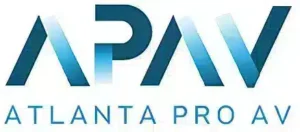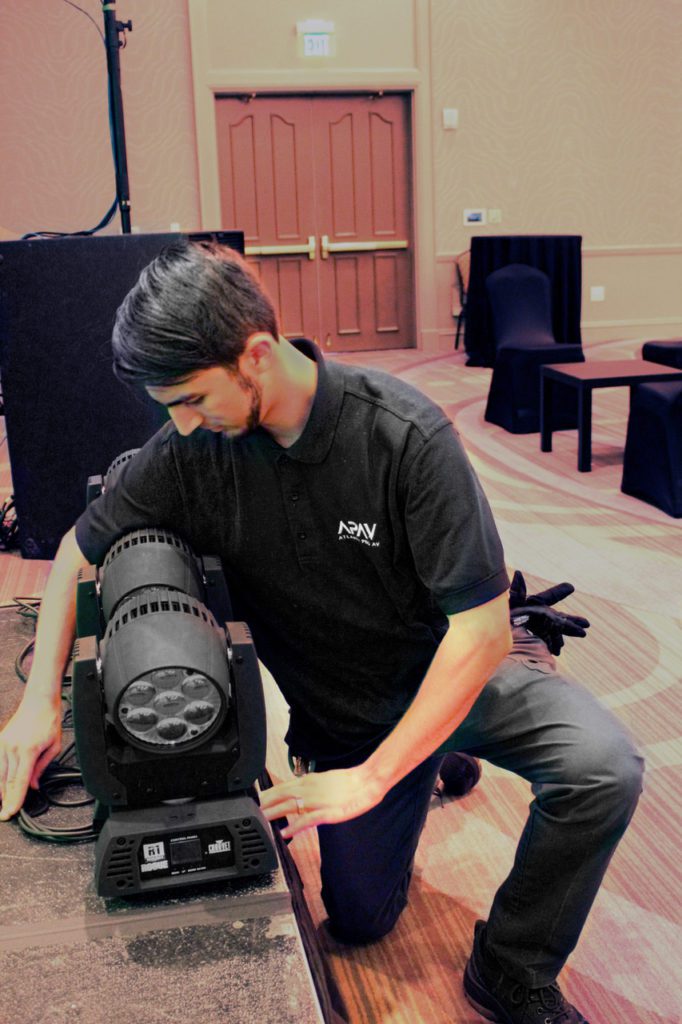
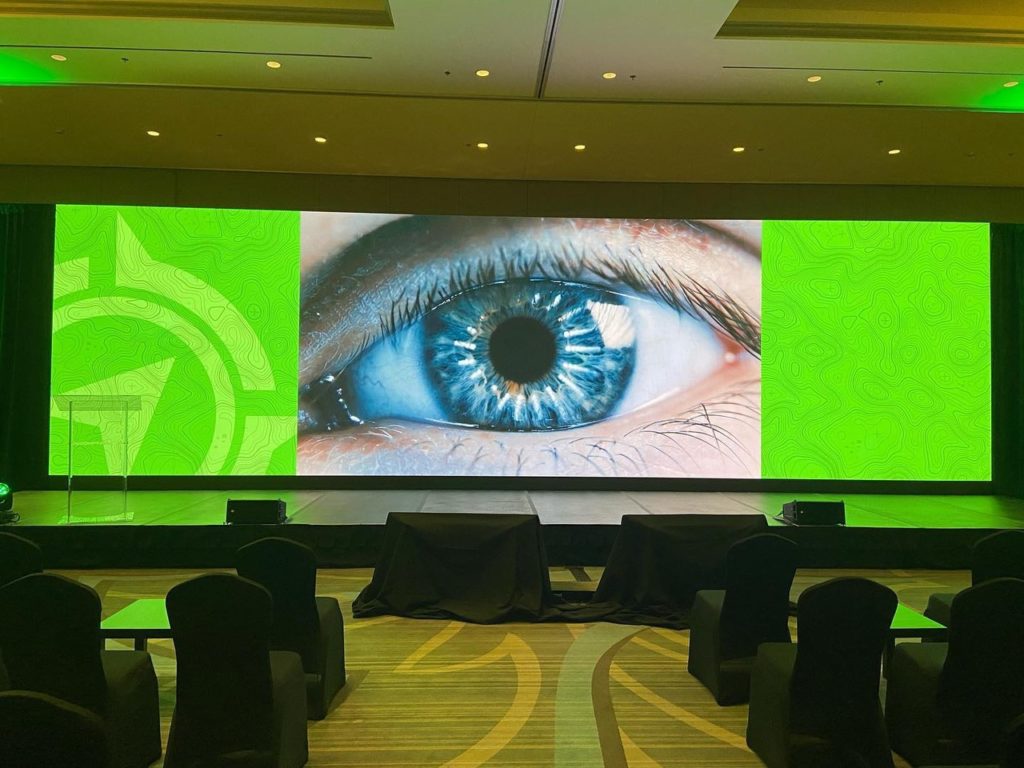
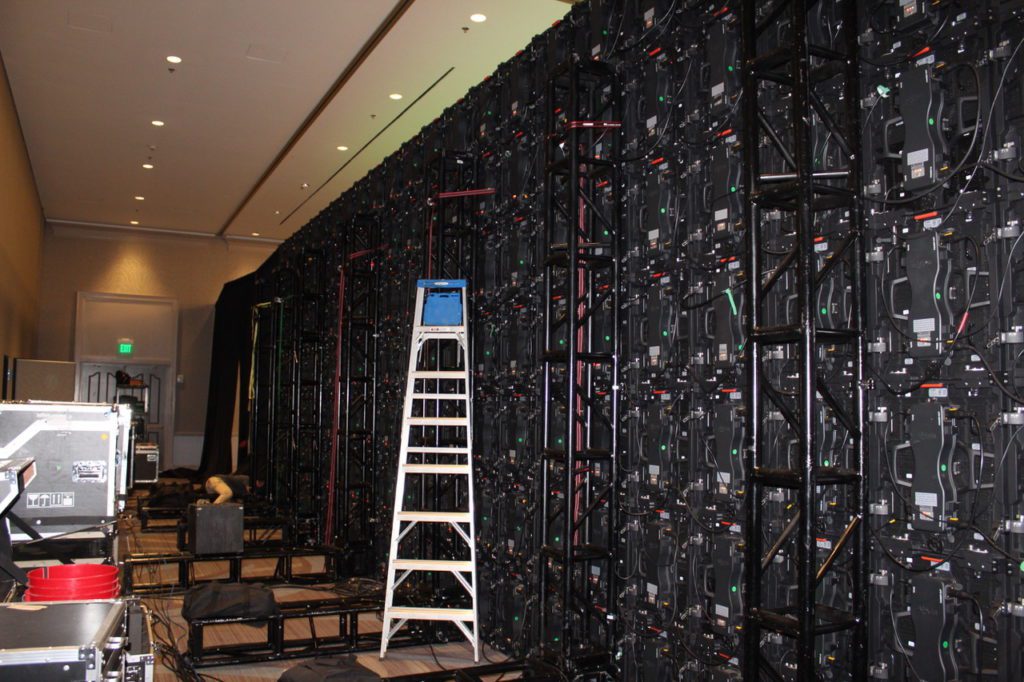
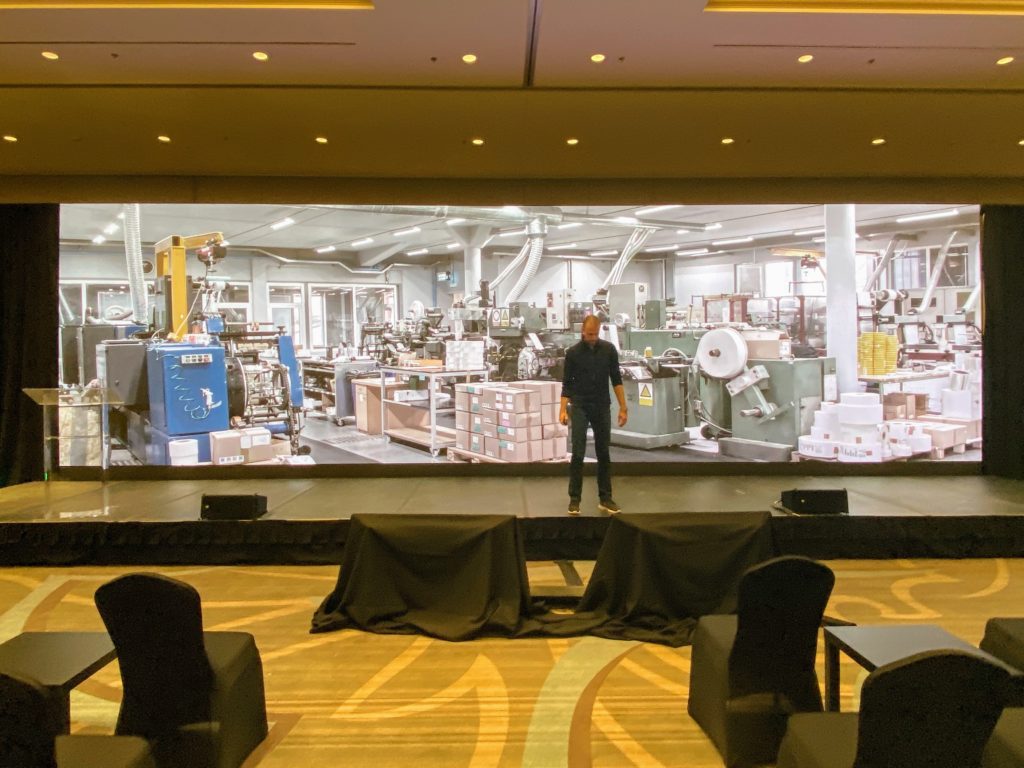
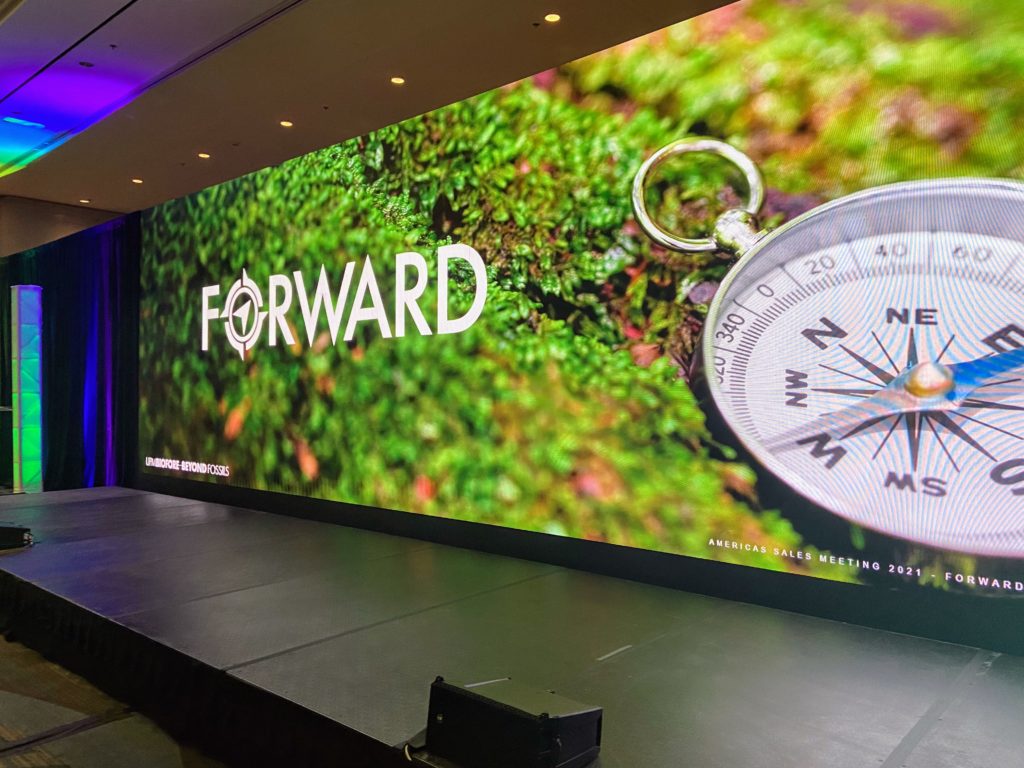
How To Make Your Presentation Pop with a Short Room and an Even Shorter Timeline
The event planner called in a panic.
Due to COVID challenges, the venue’s in-house AV company had dragged its feet on a contract, letting the planner know they weren’t up to the job just over two weeks before the event.
A client wanted a huge presentation screen for a corporate event in a posh venue in North Georgia. It would run the entire width of the stage and be augmented with elaborate lighting throughout the ballroom. And they would need it in 10 days.
The display had to have 4K resolution—this would be a complex, multimedia event, but the display requirements were about more than being flashy. The presentation had to be slick and beautiful, but it also needed to convey a lot of information–text, graphs, and numbers—and that information needed to look clear and crisp to the attendees. Complicating everything was the room itself. The venue had strict requirements about how rigging could be used, so hanging multiple projectors from the ceiling was cost-prohibitive. Finally, although the stage was wide, the room was shallow, making it a challenge to set up projectors at the back of the room.
LED Panels to the Rescue
Atlanta Pro AV could meet the timeline and had the solution—a twelve-foot high, forty-foot wide wall of LED panels.
LED panels have spectacular picture quality, efficiently handling the 4K requirements while also offering the dimensional flexibility the project called for.
On top of all that, they add a real wow factor. However, implementing a large LED wall is a big project that requires significant expertise. Having the right people available on short notice is no small trick. Atlanta Pro AV quickly assembled the team and the extra hardware needed to execute the elaborate installation on short notice.
Ready for the close-up
When planning an installation of this scope, the first challenge is determining the correct pixel pitch. Pixel pitch is similar to resolution on our laptop screens but is measured differently. Instead of counting how many dots are on a screen like a laptop, it measures the distance from one LED cluster to the next, usually in millimeters. As the pixel pitch goes down, the visual quality and cost go up. Finding the best value for a customer meant finding the highest pixel pitch that still looks great. But the closer the viewer is to the screen, the more pixels are needed to make it look flawless. And because this room was shallow, that meant the viewers would be pretty close to the screen. The pixel pitch needed to be low, and the computing power to drive it needed to be high.
More Than Technology
Even as the team planned for the programming and technology required to make the display run smoothly, the physical requirements of the installation needed to be addressed as well; the scaffold and screen alone weighed over three tons. Getting the equipment on location and on time, into the venue, and safely erected took Atlanta’s best event production team. Once the array of panels is assembled, each tile needs to be checked and rechecked before the event starts. Replacing a faulty tile isn’t as simple as it might seem—different batches of tiles can have different subtle color characteristics, causing patchiness in the final display.
But when everything comes together—software, hardware, lighting, and know-how, the display comes together for a breathtaking image. We were excited to work on this project and thrilled with how it came together.
Let us know how we can help with your next corporate event.
